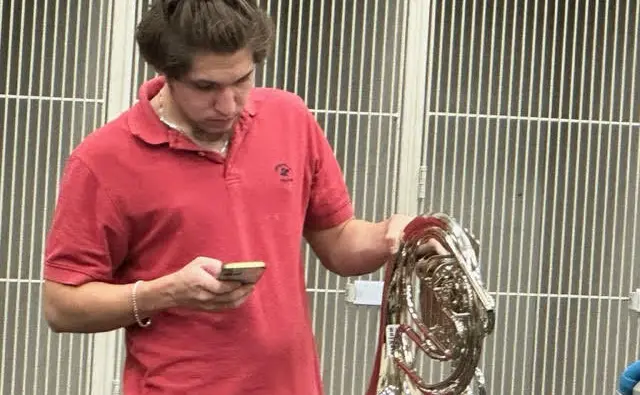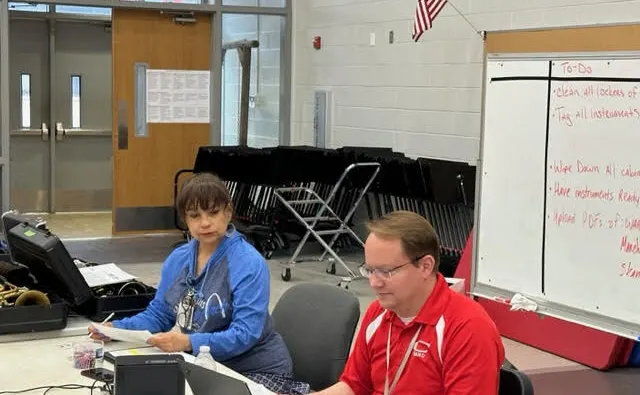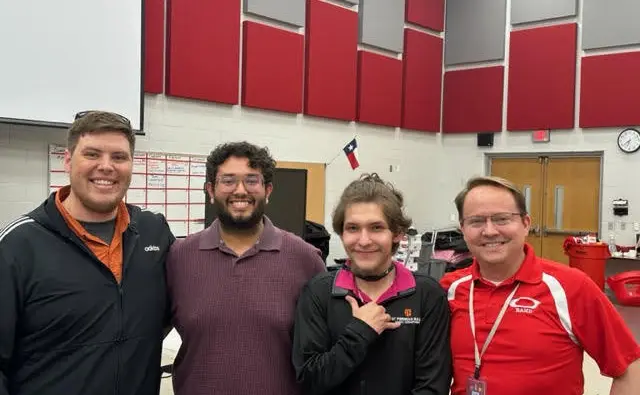Inventory Inspections Pay Off with a Methodical Plan
I must immediately have funds to purchase a new instrument! I quickly learned, after becoming a Fine Art Director, that this would be a routine request. Desiring to be an amazing Fine Arts Director, I naively approached my upper administration and announced, we need so much more money in our budget because most of the instruments need to be replaced. You can imagine how this conversation progressed, and I quickly learned that I needed data that showed the age and condition of our instruments. Thus, began my partnership with CutTime! The tips provided here are insights from this great partnership.
Tip #1 – Have a Plan
For our district, we conduct a complete inventory inspection at the end of each spring semester following our state evaluation. This process can take 2-3 solid weeks, and we schedule each program independently. Prior to arriving at a campus, the directors for the program layout all of their instruments by type. This includes any instruments in storage.
We also ask that they have lists of any students with instruments checked out for the summer and any instruments that are in the repair shop. Our goal is to ensure that if CutTime shows 10 euphoniums at a campus, we can account for all 10. For the band inventories, we have learned that hiring 4-6 college students to help with the inventory process greatly accelerates the process and allows them to get to know the band directors in their area.
Then, my staff, the campus directors, and the college students physically inspect all instruments of a certain type. We have simplified our rating so that all instruments are either excellent (like-new), good (can be played), or poor (near the end of their life). We also use the statuses of “needs repair” (put to side for repair shop) or “irreparable” (given to me to dispose of). Once we have finished all of the instruments of a certain type, we then compare with our master list in CutTime to reconcile any instruments not inspected. We complete this task for all instruments!

Tip #2 – Follow Your Plan Methodically
One of the most interesting aspects of completing a yearly inventory with your directors is that you learn a great deal about their personalities. Some directors must have serial numbers carefully written on each case, and other directors are lucky to just have a case for every instrument. Some directors love computer spreadsheets and completing inventory, and other directors love paper forms and just trust that everything is in its right locker without checking.
Regardless of their style, you must methodically follow the same plan for every campus. This often means that directors have to go back to their storage room and find extra instruments, call the repair show for a list of serial numbers, or call students to double check which instrument they have at home. Thankfully, you ultimately determine the plan that will be followed. Don’t be afraid to tweak the program from year to year, and your plan might look much different than our plan. I would just stress the importance of accounting for each instrument, each year.

Tip #3 – Hold Directors Accountable
The directors need to be aware of your expectations and be held accountable for upholding your expectations. Similar to maintaining a controlled classroom environment, these expectations must be established at the very beginning of the school year. The directors need clear guidance on checking out instruments to students, repairing instruments, and accounting for instruments at the end of the year.
Good news! CutTime can facilitate each of these steps. That is one of the reasons that we have purchased CutTime for all of our programs. All directors have the ability to check out instruments to students, track repairs, and complete instrument inspections. In our district, at the end of the inventory process, all directors must list the instruments on their inventory that have been marked as missing and declare the possible reason that the instrument cannot be found. As a Fine Arts Director, I’m much more inclined to provide a program with tens of thousands of dollars in funding when they have proven that they can keep up with the instruments that have been placed in their care.

Tip #4 – Finish the Project
This is the hardest tip to provide because it is the one that I need to follow the most. I’m really effective for the first two-thirds of the project. The, I love to take a break for lunch and then extend that lunch a little too long… When I return, I have to be very diligent to finish the last one-third of the project. This section tends to be the hardest (often percussion). Reconciling the instruments at the end of the inventory is just as important as those at the beginning. Just remember that you need good data to present to your administration, not partial data.
So, what do I do with the information that I gather? Once we have finished the inventory, I’m able to “export” all of the instrument data from CutTime. In my particular case, I partner with my local music store to secure approximate “replacement” costs for each instrument. Then, I prepare reports for my administration of the number of instruments in Excellent, Good, and Poor condition and the value of all of the instruments in those conditions. I also like to prepare a report by the age of the instruments. Now, when I sit down with my boss to discuss our Fine Arts programs and their needs, I can have detailed reports that show the specific amount of funding I am requesting to have all of our instruments in either good condition or less than their age of depreciation. Our partnership with CutTime has allowed us to not only organize our inventory but also advocate for a better inventory. I hope it can do the same for you!

Meet Our Guest Expert Author
Dr. Aaron Hawley is the Executive Director of Fine Arts for Ector County Independent School District in Odessa, TX. This marks Dr. Hawley’s sixth year as an administrator and two decades as an educator. Dr. Hawley graduated summa cum laude from Ouachita Baptist University (BME) and has earned advanced degrees from Hardin-Simmons University (MM) and the University of North Texas (DMA). Prior to becoming an administrator, Dr. Hawley served as the Director of Choirs at Permian High School, where his choirs consistently received Sweepstakes and superior ratings at University Interscholastic League (UIL) contest. Under his direction, Permian Choir’s Kantorei performed at the 2018 Texas Music Educators Association (TMEA) Convention.
Dr. Hawley is happily married to the love of his life, Mrs. Lauren Hawley. They are blessed with four amazing children (Shiloh, Alice, Wyatt; and Cyrus).
